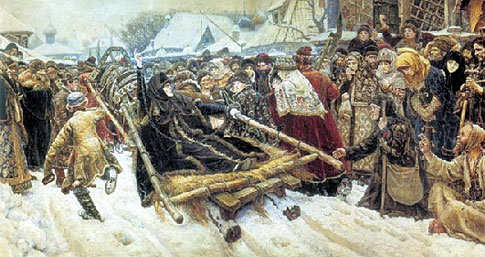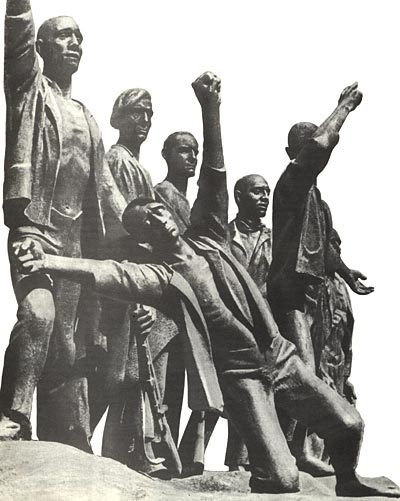Panorama Petersburg “Alexei Zubov
 There are works of art that vividly and fully express the social content of the historical period in the life of the country. They are rare, but precisely because they rise in a series of phenomena of artistic culture. One of them is the engraving “Panorama of Petersburg” (1716) by Alexei Fedorovich Zubov, expressing the spirit of Peter’s transformations.
There are works of art that vividly and fully express the social content of the historical period in the life of the country. They are rare, but precisely because they rise in a series of phenomena of artistic culture. One of them is the engraving “Panorama of Petersburg” (1716) by Alexei Fedorovich Zubov, expressing the spirit of Peter’s transformations.
This master is rightly considered to be the first daily recorder of St. Petersburg. His engravings depicting the new capital are numerous and varied. Suffice it to recall the sheet “Vasilyevsky Island”. The festive splendor of the Neva embankment. In front of the Menshikov Palace there are richly decorated triumphal gates. People meet on the shore, a carriage is drawn, drawn by four horses in a train, the smoke of the saluting guns is visible. Behind the palace is spread “St. Peter the Burkhi Island behind the Little Neva on the Prospect”. This engraving, executed in 1714, and the “Batalia at Gangut” in 1715 can be called a prelude to the “Panorama of St. Petersburg”. Experience, skill in the creation of promising species, the image of the ships, a special spiritual uplift fully manifested in the work on the product.
The city on the Neva was built surprisingly quickly, but to Peter I and this pace seemed insufficient. In 1716 he goes abroad. To his return, Catherine I orders M. Avramov, director of the St. Petersburg printing house, to enrich the perspective of the city. At that time, the printing house had two senior masters, Peter Pikart and Alexey Zubov. M. Avramov entrusted the execution of a responsible order to Zubov.
The collection “Old and New”, published in 1772, describes the moment when fleet priest-monk G. Buzhinsky brings a Dental engraving to Peter I. Let us quote a small excerpt: “A word of praise from St. Petersburg … plan and facade of St. Petersburg. This city is decorated with beautiful buildings … with Thy care, the newly introduced in Russia and the most glorious griding art depicted on the charter brings it. ” Pay attention to the words “the first-cut copper plan and the facade of St. Petersburg.” It is known that the first small species with the image of the Peter and Paul Fortress were also engraved by P. Pikart. But a contemporary calls the first type of the city precisely the Dantu engraving. Perhaps because it far exceeds the small sheets of P. Pikart with both panoramic coverage and thoroughness of execution. All this gives grounds to believe that the work of A. Zubov was presented to Peter I as the best example of Russian engraving art, which glorified the “parade” of that era – St. Petersburg.
The master opened his panorama wide. He depicted the buildings of Vasilyevsky Island, the Peter and Paul Fortress, the buildings of the Petersburg side, the Liteiny part and the embankment of the Fontanka River. The Neva is engraved, as the master often did, with two plans. The first one is darker, with detailed drawing of the waves, foam scallops; on the second, light strokes only mark the surface of the water. On the Neva ships sailing. Details of their equipment are transmitted with utmost precision.
More than half of the engraving sheet occupies the sky with swirling clouds. In the center is a huge cartouche in the form of a wide flowing ribbon, on which St. Peter-Burkh is written in Russian and Latin. The tape is supported by angels and figures of trumpeting Slavs. “Panorama of St. Petersburg” – an engraving of colossal dimensions. Its length is about two and a half meters, width is almost a meter.
Assumptions about the conformity of the engraving to the actual landscape have now been confirmed. This suggests that Zubov was a bona fide master. He knew how to seek a point. From possible positions I chose one that allowed me to see the best buildings of St. Petersburg and present them in an engraving in the most advantageous way. The master has enhanced the unforgettable beauty of the city building silhouette on the banks of the Neva with picturesque images of boats, ships whose masts here and there interrupt the horizontal of the coastline.
The product is arranged in such a way that it is perceived as an integral composition. In the foreground – the court of Peter the Great Flotilla. Zubov’s delight before the northern capital is transmitted to us, the spectators. Together with the artist, we admire the Neva dalai, sailing ships, liveliness of everyday scenes on the embankment. Strict accuracy of interpretation only contributes to this. The master enthusiastically shows the different types of ships, freely placing them on the water space. Here is the bot of Peter I himself, where he is depicted together with Catherine.
Interestingly, the dental masterpiece has predecessors. In the 1700s, two large views of the old capital were engraved. “View of Moscow from the Sparrow Hills” was performed by Johann Blikant, “View of Moscow from the Stone Bridge” – he, according to P. Picard. The last leaf, close in size to the Panorama of St. Petersburg, was probably familiar to Zubov. In the foreground the works of Bliclant’s dark bank of the Moscow River.




